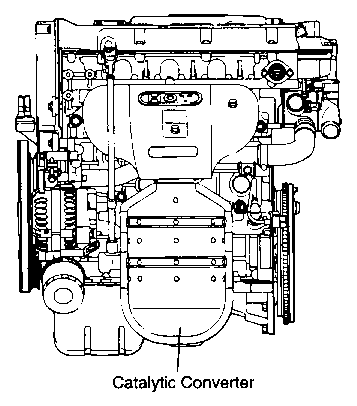EXHAUST EMISSION CONTROL SYSTEM
Exhaust emissions (CO, HO, NOx) are controlled by a combination of engine modifications and the addition of special control components.
This system is to modificate to the combustion chamber, intake manifold, camshaft and ignition system form the basic control system.
These systems have been integrated into a highly effective system which controls exhaust emissions while maintaining good driveability and fuel economy.
AIR/FUEL MIXTURE RATIO CONTROL SYSTEM
Multiport Fuel Injection (MFI) System
The MFI system is a system which employs the signals from the heated oxygen sensor to activate and control the injector installed in the manifold for each cylinder, thus precisely regulating the air/fuel mixture ratio and reducing emissions.
This in turn allows the engine to produce exhaust gases of the proper composition to permit the use of a three way catalyst. The three way catalyst is designed to convert the three pollutants (1) hydrocarbons (HC), (2) carbon monoxide (CO), and (3) oxides of nitrogen (NOx) into harmless substances. There are two operating modes in the MFI system.
-
Open loop air/fuel ratio is controlled by information programmed into the ECM.
-
Closed loop air/fuel ratio is varied by the ECM based on information supplied by the oxygen sensor.
